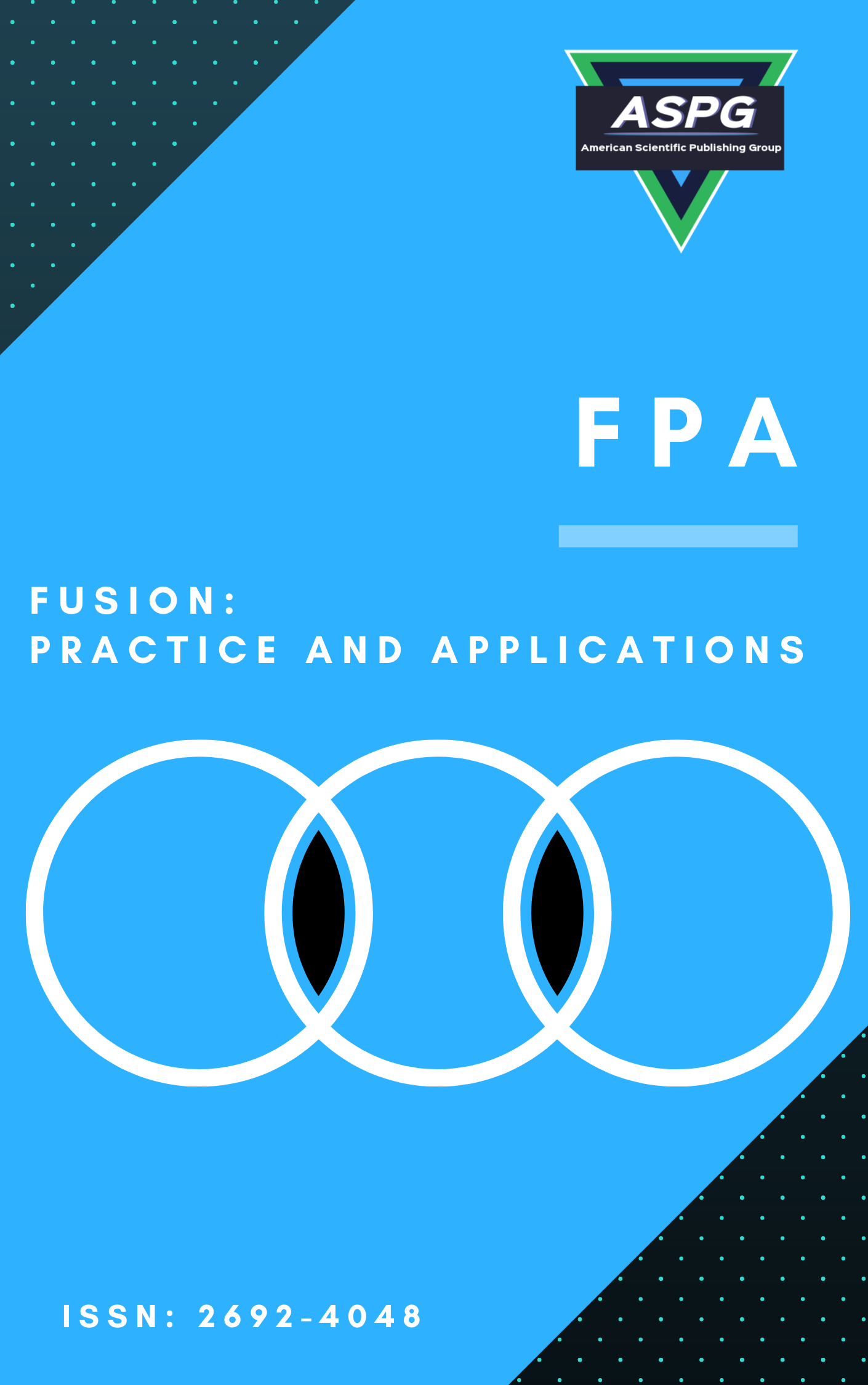

Volume 18 , Issue 2 , PP: 128-145, 2025 | Cite this article as | XML | Html | PDF | Full Length Article
Ammar AbdRaba Sakran 1 * , Ruwaida Mohammed Yas 2 , Ali Fadhil Rashid 3 , Massila Kamalrudin 4 , Mustafa Musa 5
Doi: https://doi.org/10.54216/FPA.180210
Presently, smart sensors ensure commercial decisions where integrated electronic systems can be securely organized using blockchain and quantum computing because of their unique characteristics and features. In the current scenario, large-scale quantum computers can be built in which most current cryptographic systems can be hacked. Since digital and quantum computers can conduct computations simultaneously, a quantum tool for blockchain framework design is required. Based on these concerns in this research, an enhanced quantum-assisted blockchain security model using the artificial intelligence (EQ-BSM-AI) technique has been proposed. This model validates cryptosystems and blockchain technologies to determine their vulnerability to quantum attacks. Further, in this model, quantum assisted edge computing technique has been used to model the Human-centric Internet of Things (HIoT) system by introducing a quantum key generation process. Based on the post-quantum blockchain (PQB), a secured cryptosystem that is highly resistant to quantum computer attacks has been introduced in this research. This quantum channel with multiple inputs and outputs (MIMO) is designed for a quantum-based communication system to make this model more efficient and withstand errors. In EQ-BSM-AI, an improved quantum encryption algorithm (IQEA) stores the keys for encryption with a generalized probability accumulation model. For the current quantum computers and communications, our proposed system resulted in an improved sampling error reduction of 12.4%, enhanced efficiency of quantum entanglement of 96.3%, information randomness of 93.9%, correlation analysis of 93.2%, and increased resistance to quantum computing attacks of 90.8% when compared with other existing approaches.
, Quantum Computing , Edge , Artificial Intelligence , Blockchain , Cryptography
[1] K. Kan and M. Une, "Recent trends on research and development of quantum computers and standardization of post-quantum cryptography," Monetary and Economic Studies, vol. 39, pp. 77–108, Jun. 2021.
[2] D. A. Dawar, "Enhancing wireless security and privacy: A 2-way identity authentication method for 5G networks," Int. J. Math. Stat. Comput. Sci., vol. 2, pp. 183–198, 2024, doi: 10.59543/ijmscs.v2i.9073.
[3] N. Kappert, E. Karger, and M. Kureljusic, "Quantum computing—the impending end for the blockchain?" in Proc. Pacific Asia Conf. Inf. Syst. (PACIS), Dubai, UAE, Jun. 2021.
[4] Y. L. Gao, X. B. Chen, G. Xu, K. G. Yuan, W. Liu, and Y. X. Yang, "A novel quantum blockchain scheme based on quantum entanglement and DPoS," Quantum Inf. Process., vol. 19, no. 12, pp. 1–5, Dec. 2020.
[5] T. M. Fernandez-Carames and P. Fraga-Lamas, "Towards post-quantum blockchain: A review on blockchain cryptography resistant to quantum computing attacks," IEEE Access, vol. 9, pp. 21091–21116, Jan. 2020.
[6] A. Farouk, A. Alahmadi, S. Ghose, and A. Mashatan, "Blockchain platform for industrial healthcare: Vision and future opportunities," Comput. Commun., vol. 154, pp. 223–235, Mar. 2020.
[7] N. R. Mosteanu and A. Faccia, "Fintech frontiers in quantum computing, fractals, and blockchain distributed ledger: Paradigm shifts and open innovation," J. Open Innov.: Technol., Market, Complexity, vol. 7, no. 1, p. 19, Jan. 2021.
[8] X. Sun, M. Sopek, Q. Wang, and P. Kulicki, "Towards quantum-secured permissioned blockchain: Signature, consensus, and logic," Entropy, vol. 21, no. 9, p. 887, Sep. 2019.
[9] D. Rajan and M. Visser, "Quantum blockchain using entanglement in time," Quantum Rep., vol. 1, no. 1, pp. 3–11, Apr. 2019.
[10] D. I. Ilie, K. Karantias, and W. J. Knottenbelt, "Bitcoin crypto–bounties for quantum capable adversaries," in Mathematical Research for Blockchain Economy, Springer, Cham, 2020, pp. 9–25.
[11] M. Bhavin, S. Tanwar, N. Sharma, S. Tyagi, and N. Kumar, "Blockchain and quantum blind signature-based hybrid scheme for healthcare 5.0 applications," J. Inf. Secur. Appl., vol. 56, p. 102673, Feb. 2021.
[12] J. Chen, W. Gan, M. Hu, and C. M. Chen, "On the construction of a post-quantum blockchain for a smart city," J. Inf. Secur. Appl., vol. 58, p. 102780, May 2021.
[13] N. Dey, M. Ghosh, and A. Chakrabarti, "Quantum solutions to possible challenges of blockchain technology," arXiv preprint, arXiv: 2110.05321, Oct. 2021.
[14] J. Kietzmann and C. Archer-Brown, "From hype to reality: Blockchain grows up," Bus. Horizons, Jan. 2019.
[15] M. Allende et al., "Quantum-resistance in blockchain networks," arXiv preprint, arXiv: 2106.06640, Jun. 2021.
[16] P. Sandner and P. M. Schulden, "Speciality grand challenges: Blockchain," Front. Blockchain, vol. 2, p. 1, Mar. 2019.
[17] W. Barker, W. Polk, and M. Souppaya, "Getting ready for post-quantum cryptography: Explore challenges associated with adoption and use of post-quantum cryptographic algorithms," NIST Cyber Secur. White Paper (DRAFT), vol. 26, May 2020.
[18] A. H. Lone and R. Naaz, "Demystifying cryptography behind blockchains and a vision for post-quantum blockchains," in Proc. IEEE Int. Conf. Innov. Technol. (INOCON), Bangalore, India, Nov. 2020, pp. 1–6.
[19] J. Chen, W. Gan, M. Hu, and C. M. Chen, "On the construction of a post-quantum blockchain for a smart city," J. Inf. Secur. Appl., vol. 58, p. 102780, May 2021.
[20] M. Anderson, "Quantum cryptography needs a reboot: A failed security product could someday power large-scale quantum computing," IEEE Spectr., vol. 56, no. 10, pp. 9–10, Sep. 2019.
[21] P. Nimbe, B. A. Weyori, and P. K. Yeng, "A framework for quantum-classical cryptographic translation," Int. J. Theor. Phys., vol. 60, no. 3, pp. 793–818, Mar. 2021.
N. Storublevtcev, "Cryptography in the blockchain," in Proc. Int. Conf. Comput. Sci. Appl., Springer, Cham, Jul. 2019, pp. 495–508.